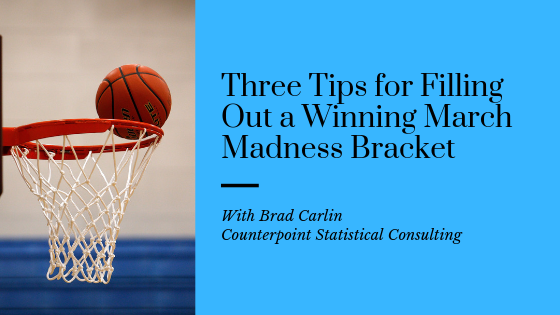
With March just around the corner, there’s a good chance that someday soon one of your coworkers will be making the rounds, trying to get participants for your office’s March Madness pool. Even if you haven’t watched a NCAA game all season, there are a few tips that can help you fill out your bracket like a pro.
Use the free online Poologic calculator
Poologic.com offers a free online program that helps you construct a bracket with a higher probability of winning. It uses point spreads, team rankings, and other metrics to determine your bracket’s best inputs. The program handles a fairly wide range of office pool designs, including those with fairly complex upset bonuses and other incentives.
Know your competition
It’s important to know any local biases of the competition in your particular pool. If you’re playing in an office pool in Kentucky, chances are many of your colleagues will be picking Kentucky to go all the way. Staying away from the local favorite will help increase your odds of ending up in the money.
It’s also important to know how many people are participating in your pool. For smaller pools of, say, 20 to 30 entries, you can feel more confident in sticking with the higher seeded teams knowing that they have the highest likelihood of winning and tied entries are unlikely. Yet, if you were to employ this strategy in a large office or national pool, you’re likely going to come up against a significant number of entries that have nearly the same picks you do. This would mean lower average payoff since, even if you win, your earnings are more likely to be shared across the multiple winners.
Being overly conservative is not necessarily your friend
Choosing the number one seeds across the board in the Final Four may seem like a safe strategy. However, it’s also a strategy that a lot of other people are likely to use, particularly casual players who don’t typically follow college basketball. And in any case, it’s unlikely the Final Four will be comprised of only number one seeds: it has only happened once in the history of the tournament.
Optimal selection in NCAA bracket pools requires tools from both probability and game theory, making them a fun and challenging pastime for the sports nerd. If you want to know more, I heartily recommend the brand new CRC book by my good friend Tom Adams, Improving Your NCAA Bracket With Statistics. Tom is a systems analyst, mathematician, and long-time March Madness guru who created and maintains the poologic.com page. His book is an easy and engaging read about both the history and optimal solution of bracket pools. It includes plenty of pragmatic strategies, including the “contrarian” approach of being somewhat skeptical of the very top teams since they tend to be overbet by other players. Good luck and enjoy the 2019 NCAA mens’ and womens’ tournaments!